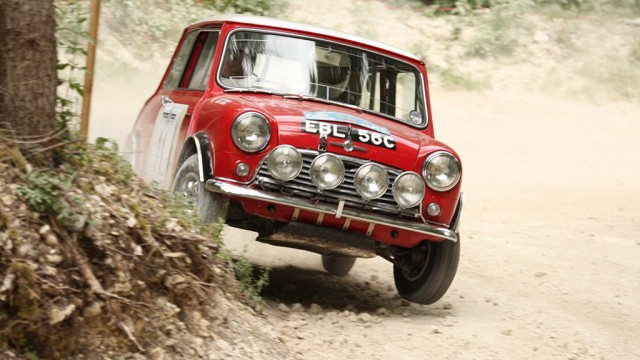Mini Cooper S in the rallies

Manufacturer:
 Mini
Mini
Category: Early era
The Mini Cooper S stands as one of the most iconic versions of the Mini, particularly known for its success in motorsport. Developed by John Cooper, the "S" variant was an enhanced version of the standard Mini Cooper, designed specifically to take advantage of the car's already nimble handling and small size. The key difference in the Cooper S was its upgraded engine, a 1.0-liter unit that was later enlarged to 1.3 liters, allowing it to produce more power, around 75 horsepower, a significant increase for a car of its size. This increase in power, combined with the lightweight body and front-wheel-drive system, made the Mini Cooper S a formidable competitor on the racetrack and rally stages.
One of the defining aspects of the Mini Cooper S was its handling. The front-engine, front-wheel-drive layout gave the car excellent traction, especially on loose surfaces like gravel or snow. Its compact dimensions allowed it to take sharp corners and navigate narrow roads far more efficiently than many of its larger, more powerful rivals. This ability to outmaneuver bigger competitors was one of the reasons the Cooper S became a force in rallying during the 1960s, where the car's size and handling were critical to its success. It also featured disc brakes at the front, which provided superior stopping power compared to many other cars of the era.
The Mini Cooper S achieved legendary status in the Monte Carlo Rally, where it was driven by some of the best rally drivers of the time. Paddy Hopkirk became a household name when he won the 1964 Monte Carlo Rally, defeating much more powerful cars thanks to the Mini’s agility and his expert driving. In the following years, the Mini Cooper S continued its dominance, with Timo Mäkinen and Rauno Aaltonen also securing victories, most notably in 1965 and 1967. These wins, particularly in Monte Carlo, cemented the Cooper S's reputation as a rally giant-killer. It became a symbol of how clever engineering and driving skill could overcome the raw power of larger, heavier competitors.
Beyond Monte Carlo, the Mini Cooper S found success in various rallies across Europe, showcasing its versatility and reliability in some of the toughest conditions motorsport had to offer. Its 1.3-liter engine and finely tuned suspension allowed it to perform well on all kinds of surfaces, from tarmac to dirt, and its ability to keep pace with more powerful cars was a testament to its brilliant design. The car's lightweight construction and low center of gravity made it not only fast but also extremely responsive, allowing drivers to extract every ounce of performance from the small but mighty machine.